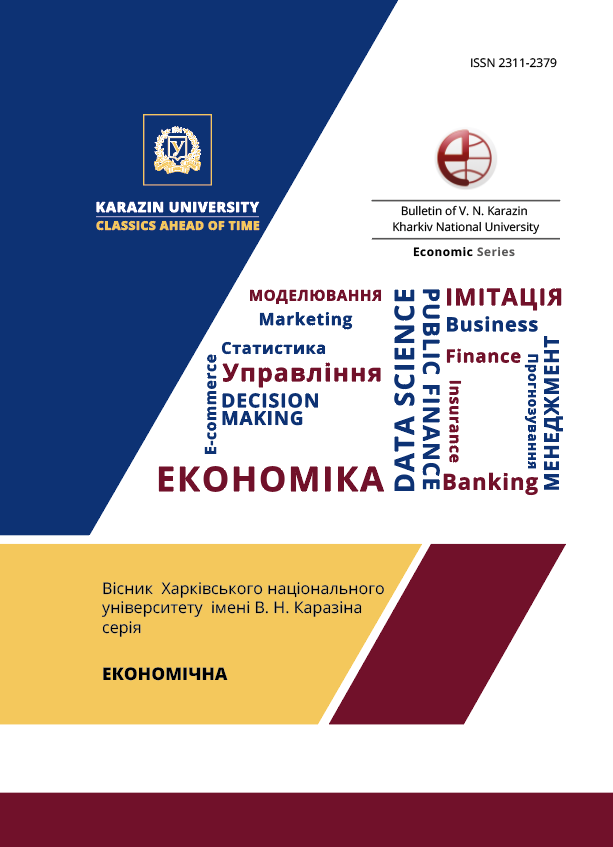Сучасні методи та технології тайм-менеджменту
Анотація
Представлене дослідження присвячене вивченню множини методів та технологій сучасного тайм-менеджменту. Метою дослідження є розробка їх узагальненої класифікації на основі різних критеріїв, та оцінка їх потенційної корисності для різних типів людей і організацій. В статті продемонстровано, що світова практика налічує безліч різноманітних методів, методик, технік, технологій, інструментів, прийомів та принципів тайм-менеджменту. Всі вони активно використовуються в практичній діяльності. Всі методи та технології тайм-менеджменту запропоновано поділити на основі трьох критеріїв: залежно від способу організації (паперові, цифрові та змішані); залежно від походження (класичні та похідні); залежно від принципів, що лежать в їх основі (методи розподілу часу та способи його контролю, методи розподілу та диференціації завдань, методи контролю продуктивності, методи обробки та збереження інформації та методи боротьби із прокрастинацією). Дана класифікація дозволяє користувачам зорієнтуватися в множині методів тайм-менеджменту і обрати саме такі, які будуть враховувати їх індивідуальні потруби. Вони не є взаємовиключними, і при бажанні їх можна використовувати у різних комбінаціях з врахування індивідуальних потреб. В статті акцентовано увагу на тому, що в епоху діджиталізації з’являється все більше гнучких, швидких і зручних цифрових систем тайм-менеджменту. Завдяки розширенню доступу до мережі Internet більшість он-лайн сервісів переходять на функціонування у вигляді web-сервісів, які за допомогою web-броузеру дозволяють користуватись ними з будь-якого електронного пристрою (комп’ютера, планшету чи смартфону) у будь-якій точці світу. Тому перспективним для подальших наукових досліджень вважаємо детальне вивчення цифрових методів тайм-менеджменту, аналіз їх основних функцій, виявлення переваг на недоліків, які вони дають користувачам.
Завантаження
Посилання
Moller, C. (1988). Personal Quality: The Basis of All Other Quality. Time Manager International.
Trejsi, B. (2007). Rezultativnyj tajm-menedzhment. Jeffektivnaja metodika upravlenija sobstvennym vremenem; per. s angl. A. Evteeva. M.: SmartBuk, [in Russian]
Tracy, B. (2017). Eat That Frog!: 21 Great Ways to Stop Procrastinating and Get More Done in Less Time. Oakland: Berrett-Koehler Publishers, Incorporated.
Tracy, B. (2014). Time management (The Brian Tracy Success Library). AMASOM.
Allen, D. (2018). How to organize things. The art of productivity without stress. Kyiv: КМ-Buks, (in Ukrainian)
Allen, D. (2001). Getting Things Done: The Art of Stress-Free Productivity. New York: Penguin Putnam.
Allen, D. (2003). Ready for Anything: 52 Productivity Principles for Work and Life. New York: Viking Books.
Kovi, S. (2012). 7 habits of extremely effective people. Book Club "Family Leisure Club. (in Ukrainian)
Covey, S. (1990). The 7 Habits of Highly Effective People. Published by Free Press.
Lakein, A. (1996). How to Get Control of Your Time and Your Life. Signet.
Kennedy, D. (2013). Time Management for Entrepreneurs: The Ultimate No Holds Barred Kick Butt Take No Prisoners (Second Edition). Published by Entrepreneur Press.
Siewert, L. (2021). Time management based on the ALPEN method (by Lothar J. Siewert). Vienna Student Counselling. Retrieved from https://www.wu.ac.at/fileadmin/wu/h/students/Student_Engagement_and_Counselling/Counselling_%40_home/Anleitung_ALPEN_E.pdf.
Küstenmacher, W. T., Seiwert, L. (2008). Simplify Your Life. Einfacher und glücklicher Leben. German. Published by Campus.
Godefroy, Ch. H., Clark, J. (1990). The Complete Time Management System. London: Piatkus.
Cirillo, F. (2007). The Pomodoro Technique. Retrieved from https://francescocirillo.com/pages/pomodoro-technique.
Alyushyna, N. O. (2009). Time management of an official: the art of planning and managing one's time: a method. rivers to the distance. course. Kyiv : NADU. (in Ukrainian)
Balabanova, L. V., Sardak, O. P. (2016). Organization of work of the manager: textbook. Kyiv: Profesional. (in Ukrainian)
Vynogradskyj, M. D., Vynogradska, A. M., Shkanova, O. M. (2012). Organization of work of the manager: textbook. Kyiv: CYL. (in Ukrainian)
Dovgan, L. Ye. (2014). The work of the head, or practical management: textbook. Kyiv: Eksob. (in Ukrainian)
Lukashevich, N. P. (2013). Theory and practice of self-management: textbook. 2nd ed. Kyiv: MAUP. (in Ukrainian)
Lugova, V. M., Golubyev, S. M. (2019). Fundamentals of self-management and leadership: a textbook. Kharkiv : KHNEU S. Kuznecya. (in Ukrainian)
Netepchuk, V. V. (2013). Self-management: textbook. Rivne: NUVPG. (in Ukrainian)
Chajka, G. L. (2014). Self-management of the manager: textbook. Kyiv: Znannya. (in Ukrainian)
Yurynecz, Z. V. (2014). Self-management: textbook. Lviv: Ivan Franko Lviv National University. (in Ukrainian)
Hmil, F. I. (2004). Business communication: textbook. Kyiv: Akademvydav. (in Ukrainian)
Olijnyk, O. I. (2009). Business communication: a textbook. Krasnoarmijsk: KII DonNTU. (in Ukrainian)
Schwartz, T. (2011). A 90-Minute Plan for Personal Effectiveness. Retrieved from https://hbr.org/2011/01/the-most-important-practice-i.
Gifford, J. (2021). The Rule of 52 and 17: It's Random, But it Ups Your Productivity. Retrieved from https://www.themuse.com/advice/the-rule-of-52-and-17-its-random-but-it-ups-your-productivity.
Ballantyne, C. (2016). 10-3-2-1-0 Formula to Get More Done. Retrieved from http://www.earlytorise.com/10-3-2-1-0-formula-to-get-more-done/.
Arhangelskij, G. (2008). Corporate Time Management: An Encyclopedia of Solutions. Moscow: Alpina Business Books. (in Russian)
Arhangelskij, G. (2002). Timing: personal management accounting system. Management today, 2, 24-33. (in Russian)
Nightingale, R. (2021). Time Blocking – the secret weapon for better focus. Retrieved from https://www.makeuseof.com/tag/time-blocking-secret-weapon-better-focus/.
Eisenhower, D. Carre, J. (2014). What Is Important Is Seldom Urgent and What Is Urgent Is Seldom Important. Retrieved from https://quoteinvestigator.com/2014/05/09/urgent/.
Cavoulacos, A., Minshew, K. (2017). The New Rules of Work: The Modern Playbook for Navigating Your Career. Published by Currency.
Bailey, Chr. (2016). The Productivity Project: Accomplishing More by Managing Your Time, Attention, and Energy. Published by Crown Business.
Canfield, J., Hansen, M. V., Hewitt, L. (2001). The Power of Focus. Vintage/Ebury Division of Random.
Ferriss, T. (2009). The 4-Hour Workweek: Escape 9-5, Live Anywhere, and Join the New Rich. Published by Harmony.
Forster, M. (2015). Secrets of Productive People: The 50 Strategies You Need to Get Things Done. Teach Yourself.
Litvak, D. (2002). Pinarik calendar: How to stop being lazy. Retrieved from http://time-shkola.ru/archives/211. (in Russian)
Babauta, L. (2021). Zen To Done (ZTD): The Simple Productivity System. Retrieved from https://zenhabits.net/zen-to-done-ztd-the-ultimate-simple-productivity-system/.
Anderson, D. (2010). Kanban. Successful Evolutionary Change for Your Technology Business. Published by Blue Hole Press.
Gleeson, K. (2008). The Personal Efficiency Program: How to Stop Feeling Overwhelmed and Win Back Control of Your Work! Wiley; 4th edition.
Bjuzen, T. (2019). Mind maps. The Complete Guide to Powerful Thinking Tool; per. From English. Yu. Konstantinova. Moscow: Mann, Ivanov i Ferber. (in Russian)
Sethi, R. (2019). I will teach you to be rich. Workman Publishing.
Syndrome of oranges. We make decisions easily. (2010). Retrieved from https://uspevai-s-detmi.livejournal.com/13157.html. (in Russian)

